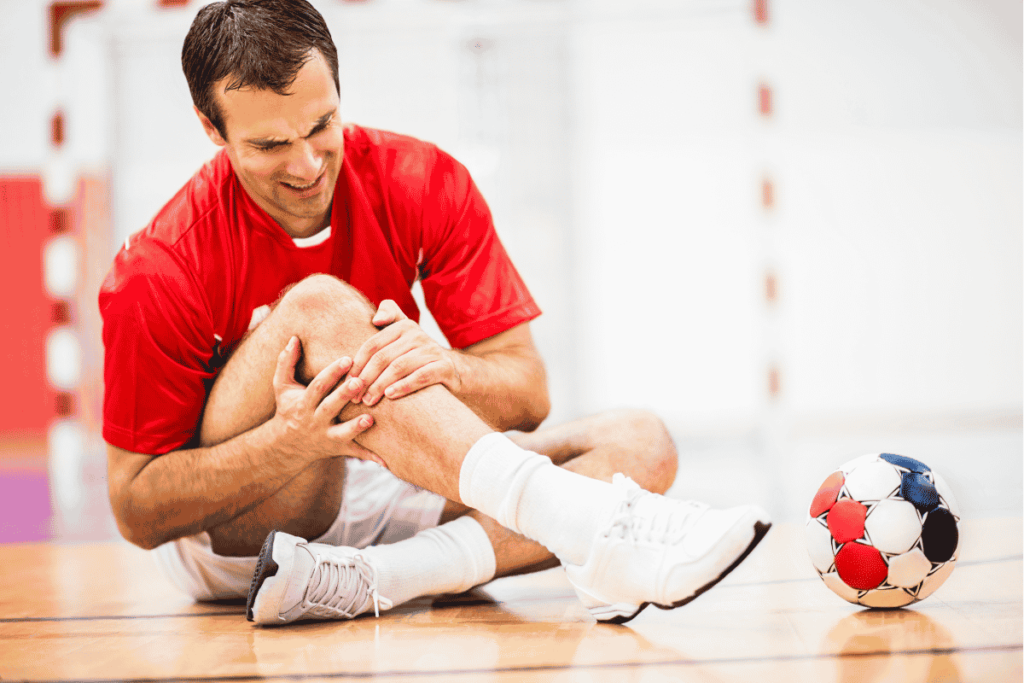
Summer is a wonderful time of year to be outside, playing different sports, and engaging in other recreational activities. That also means is the time of the year when we see more sports injuries than any other time of year.
Summertime is truly the best time to enjoy the weather outside with friends and family. However, the blur of activity comes with an increased risk of injuries and accidents.
If you don’t know what sports activities injuries you might be prone to this summer, you could inadvertently bring one on yourself. As a result, it’s critical to be aware of the potential sports injuries that may harm you. This way, you can take precautions in order to prevent them and promote the safety and well-being of everyone.
So today we’re breaking down the top three most common sports injuries and how to treat them if you encounter them.
Common Sports Injuries #1: Sprains and Strains
A strain and a sprain are different conditions. A strain hurts a muscle, while a sprain hurts a ligament. A strain occurs when you stretch or tear muscle tissue by overextending it. A sprain is a stretch or tear of a ligament near a joint, such as a knee, ankle, or wrist.
Sprains of most often caused by falling or twisting a ligament too much. The pain you feel after rolling your ankle is typically a sprain. Strains are typically caused by overuse or repetitive motions like running or jumping.
Sprains and strains are often indistinguishable by the average person or even a doctor with further examination.
Symptoms include
- Swelling around the affected area
- Bruising
- Limited range of motion
- Pain
Treatments for sprains and strains include the common RICE method of (rest, ice, compression, and evaluation). The first 48 hours are the most critical to reducing and eliminating pain following an injury. If pain is severe or persists beyond 72 hours contact a pain specialist for a detailed evaluation.
Common Sports Injuries #2: Achilles Tendon Injuries
The thick, corded tissue that connects your calf muscle (in the back of your lower leg) to your heel is the Achilles tendon. This is the body’s biggest tendon. It’s used for walking and other activities where you need to put weight on your foot. Injuries to this tendon are common and can include things like tendonitis and tears.
Tendinitis can result from overuse or acute damage to the area. It produces discomfort in your calf and heel region. Because of tendonitis, certain parts of your tendon may become thicker and harder. If you don’t treat it, this will get worse.
Tears in your tendon fibers can lead to a full or partial break (or tear) in your tendon. You may hear a snap that appears to originate from the back of your heel or calf. This could be a tendon rupture, which demands urgent medical treatment and are incredibly painful.
Treatment of Achilles tendon injuries typically include
- Rest, Ice, Compression, and Evaluation
- Non-Steriorial anti-inflammatory drugs (NSAIDs) like Tylenol
- Physical therapy
- Stretches
- Low impact therapy
- Surgery
- Short-term pain management
If you think you’re experiencing an Achilles injury you likely won’t want to wait.
Common Sports Injuries #3: Rotator Cuff Injuries
An inside shoulder is where the rotator cuff is. It enables your arm to move and keeps it steady. When the same activities are repeated frequently, such as swimming, tennis, or baseball, injuries to this area are common. Swelling in your shoulder and discomfort when you attempt to lift your arm are signs. This condition is persistent in nature and often requires medical intervention.
Treatment of rotator cuff injuries can range from the standard and conservative RICE method but more severe cases can require pain management, steroid injections, and even surgery.
Preventing of Sports Injuries
As Texans, we know the best offense is always a good defense. As such the same is true for sports injuries. While you can never fully prevent sports injuries as most of them are accidental and unavoidable. However, you can reduce the likelihood of them in the first place.
Taking precautions like stretching, staying hydrating, not over-exerting yourself, and staying in shape are all great ways to reduce your chances of sports injuries. You can also take precautions to wear appropriate shoes and add support braces to vulnerable areas.
If you do experience a sports injury be sure to rest the affected area and apply ice and compress as needed, and don’t hesitate to reach out to the Dallas #1 pain specialist. We’re experienced in all things pain and we can help you heal and feel better in the meantime so you can keep living your best summertime life!

Recent Comments